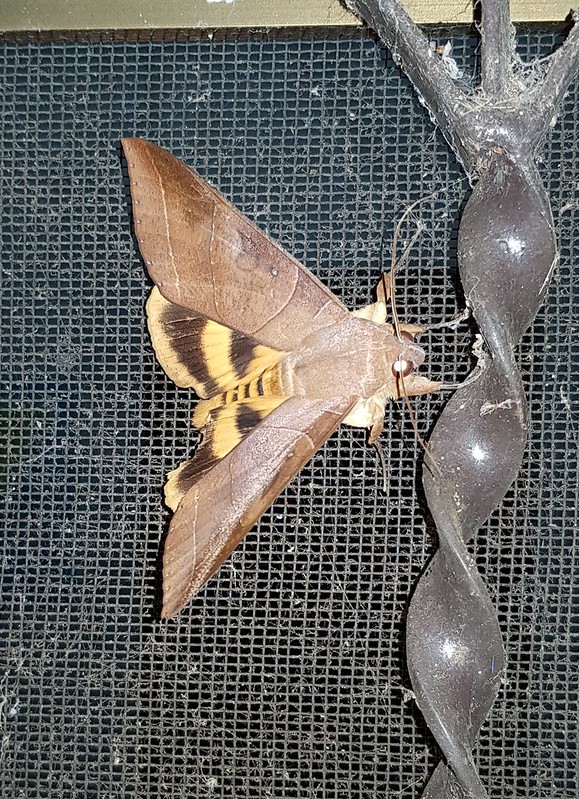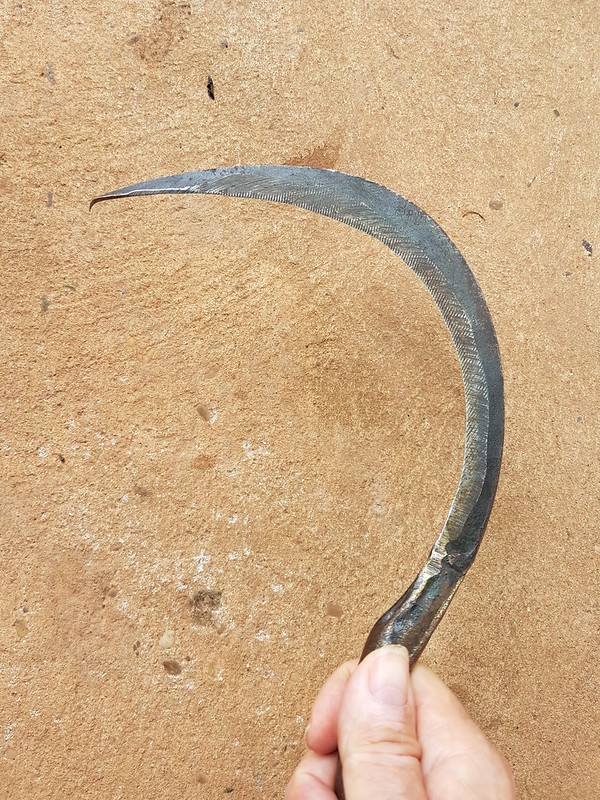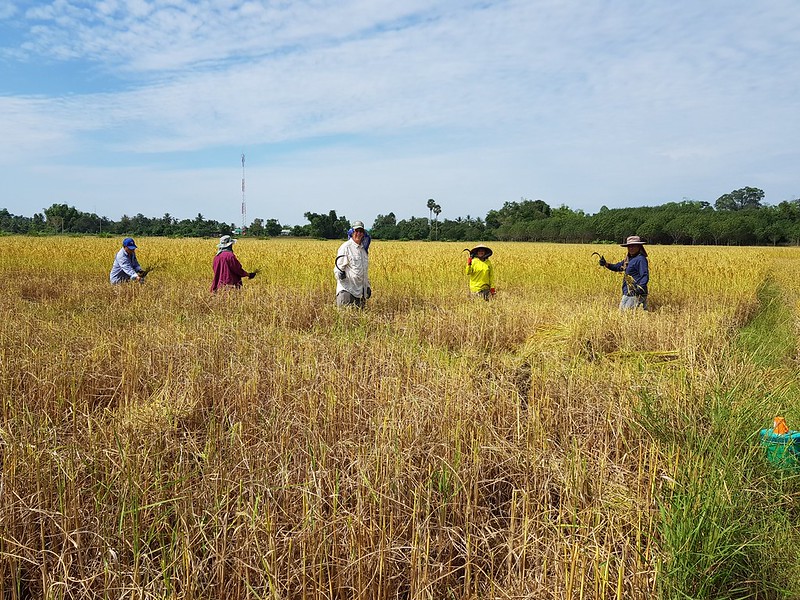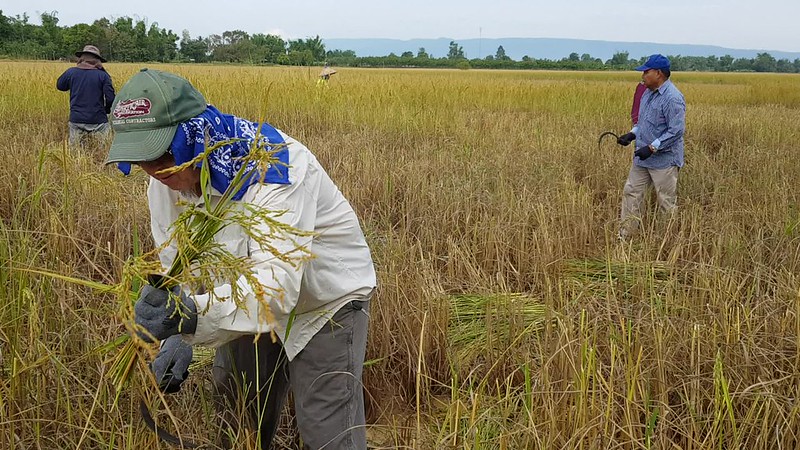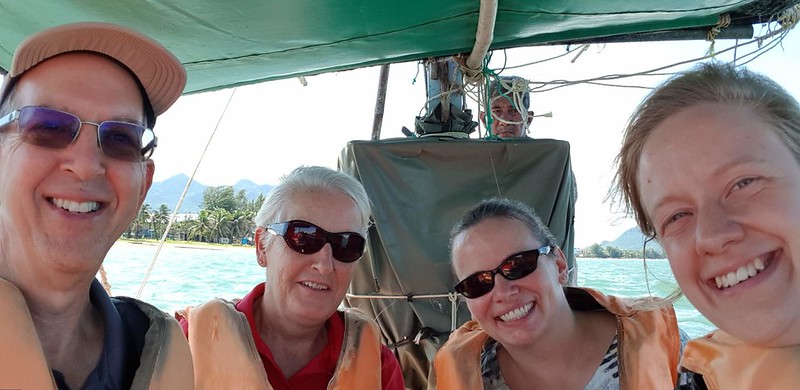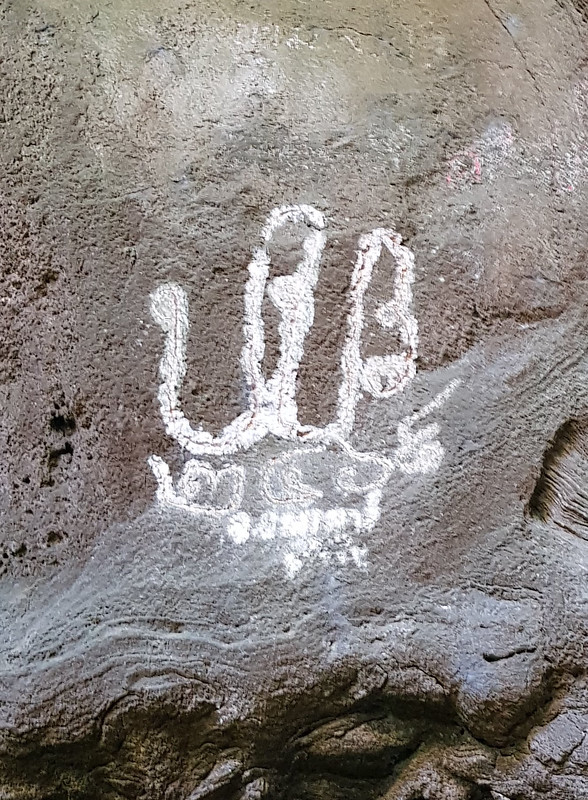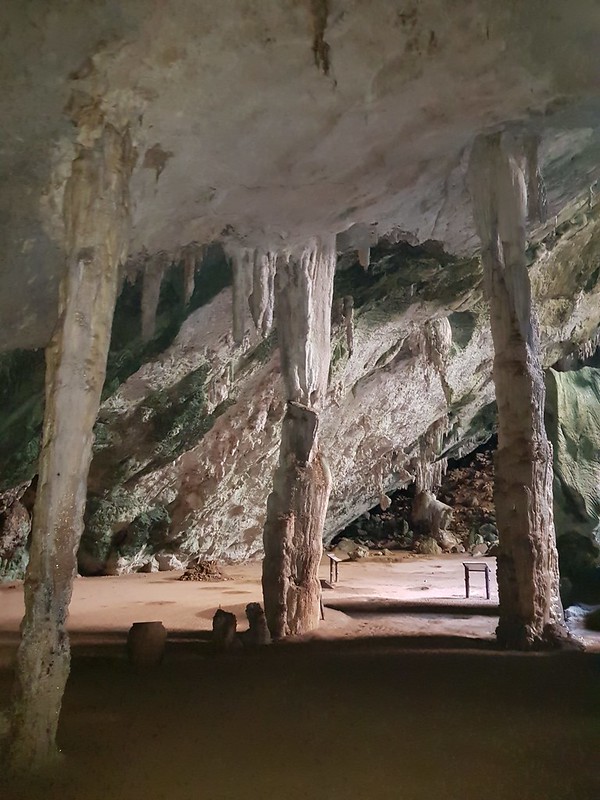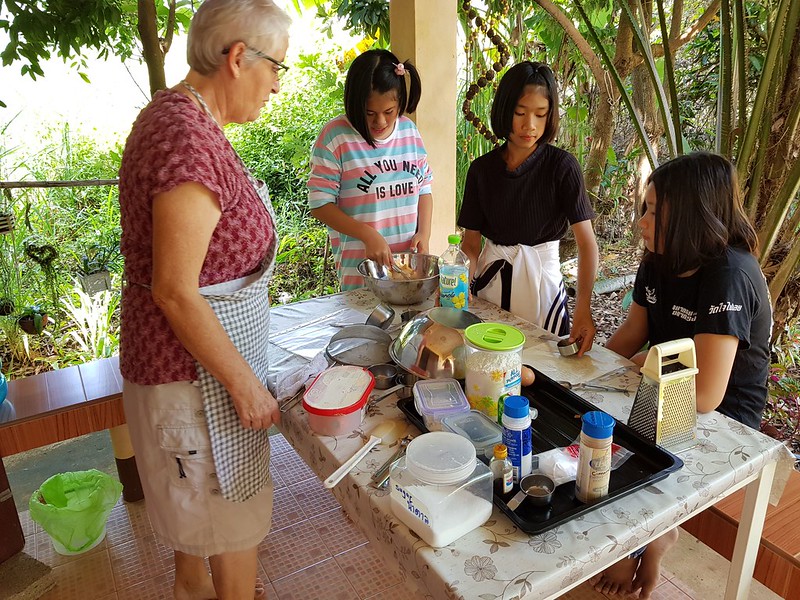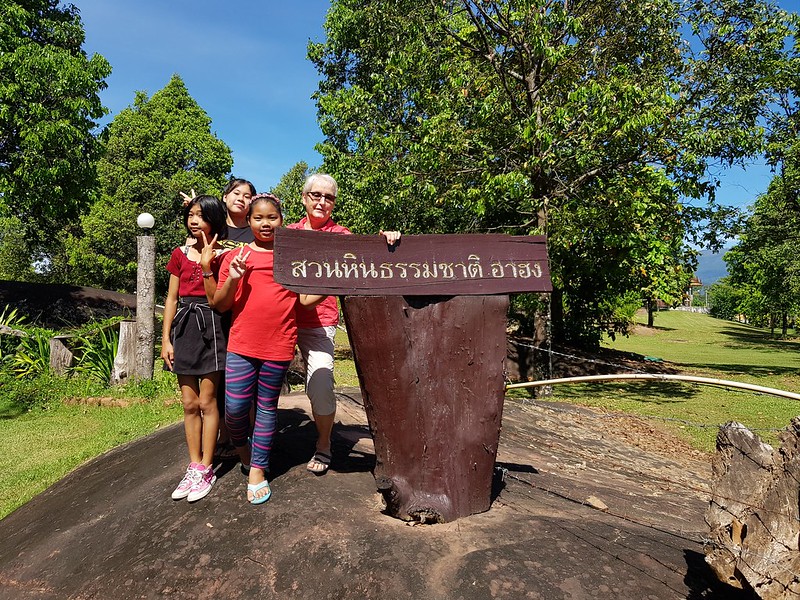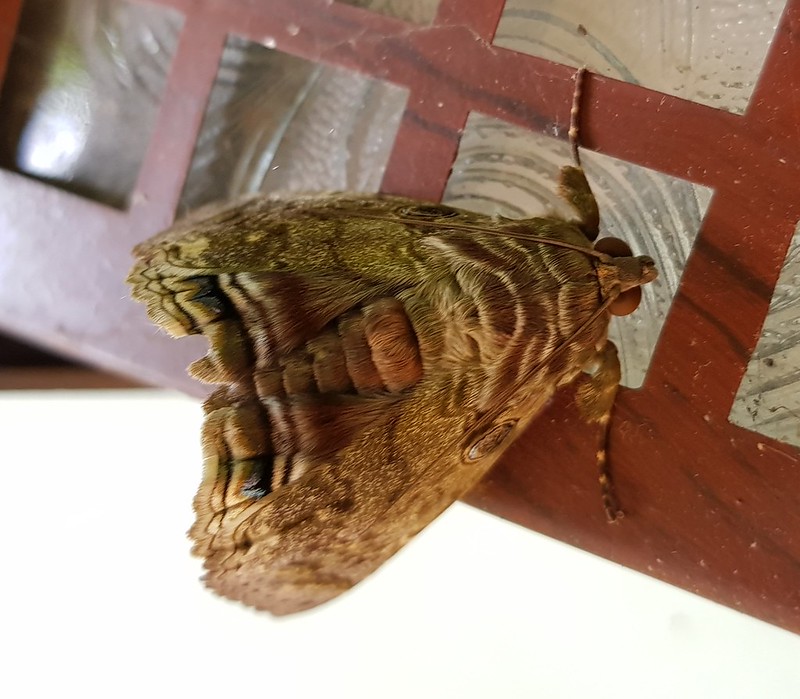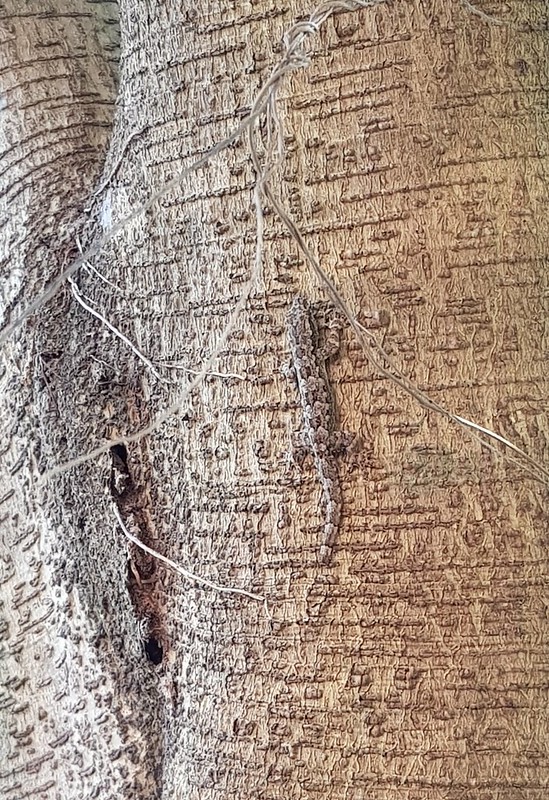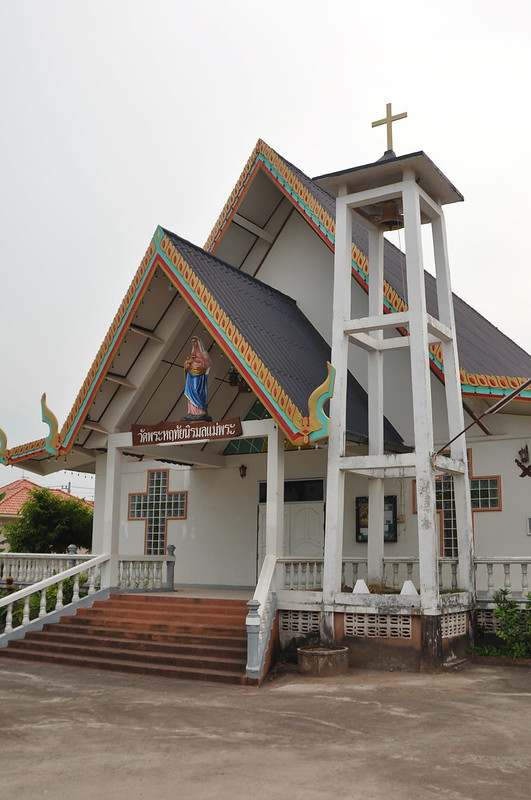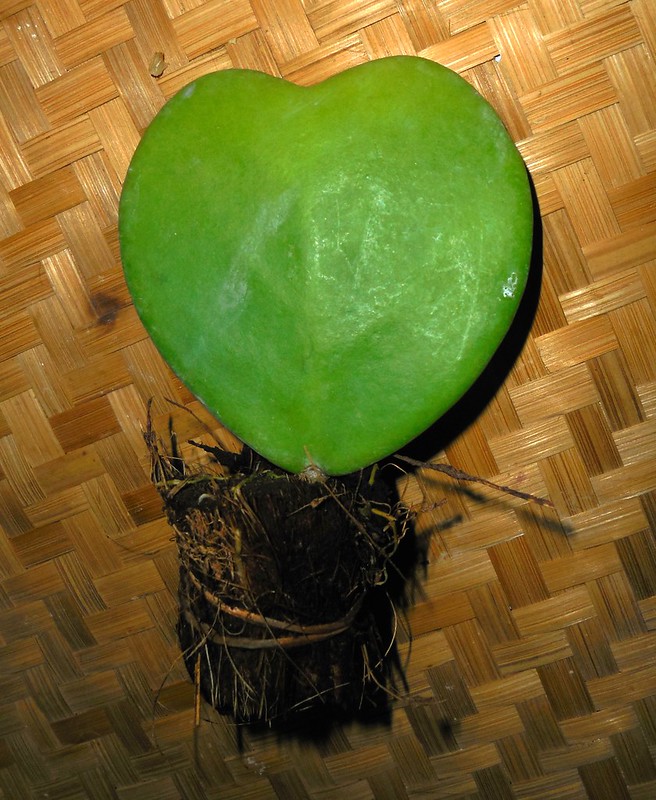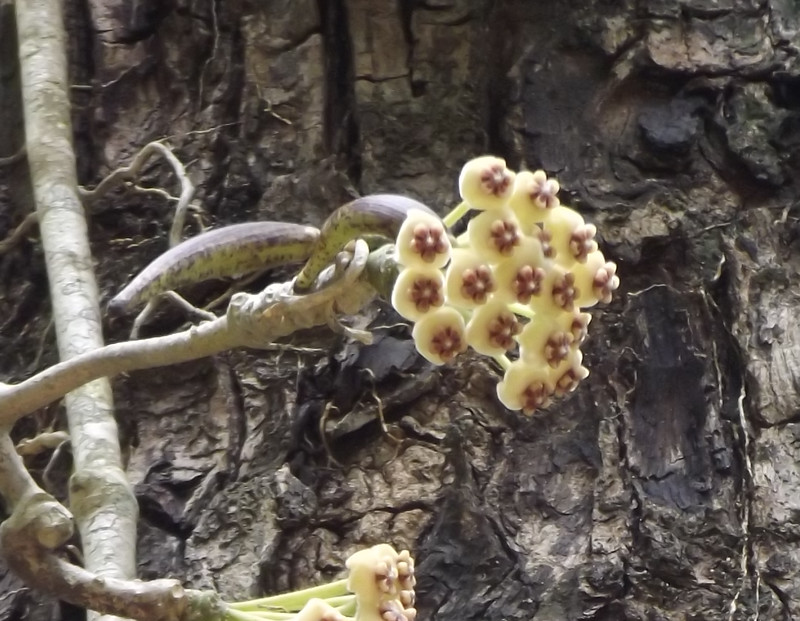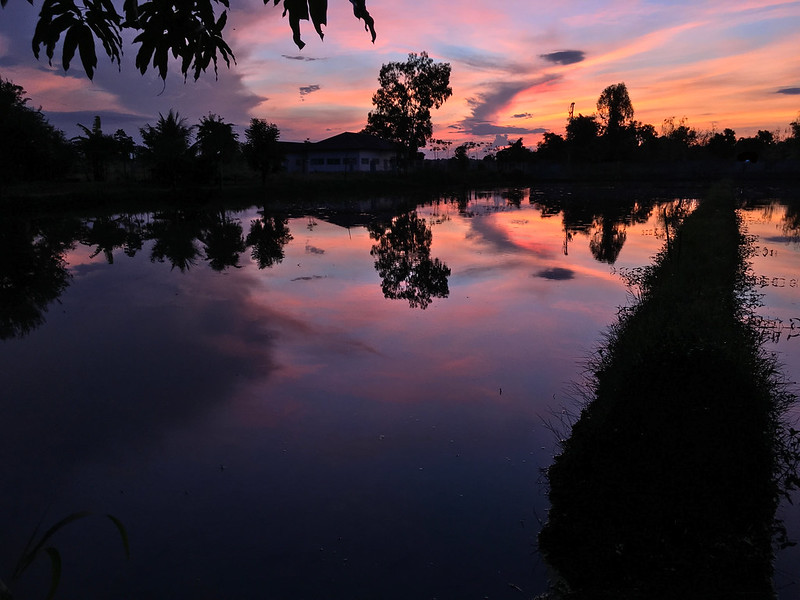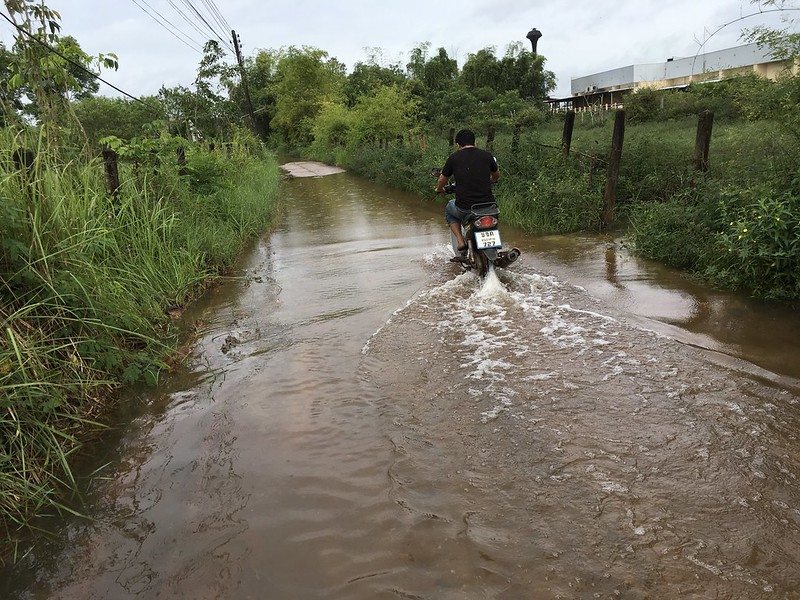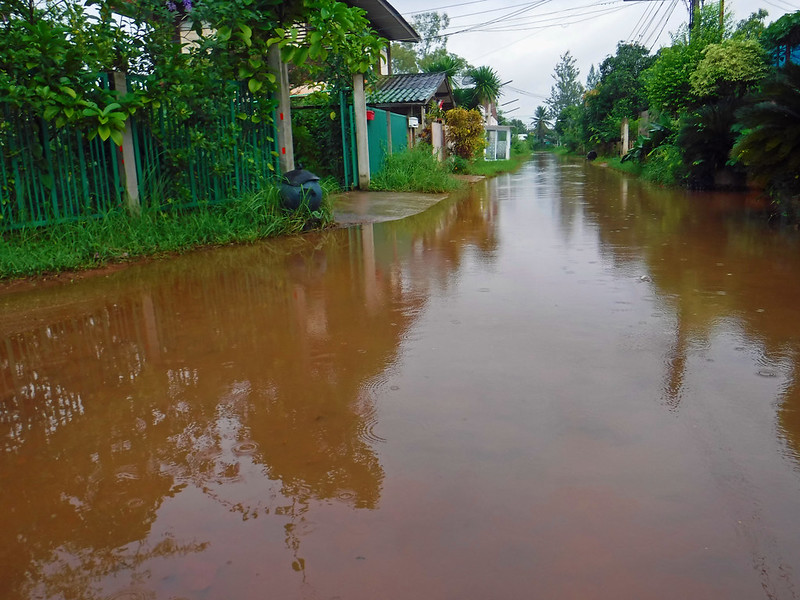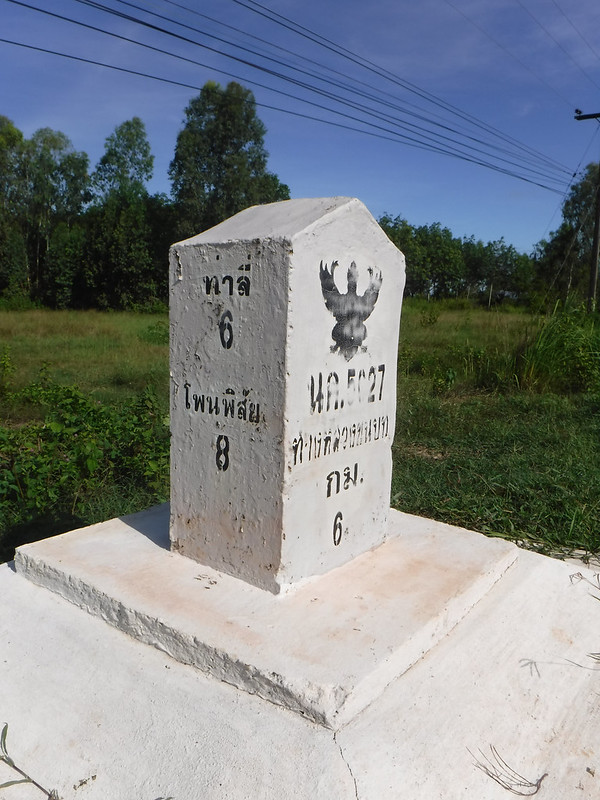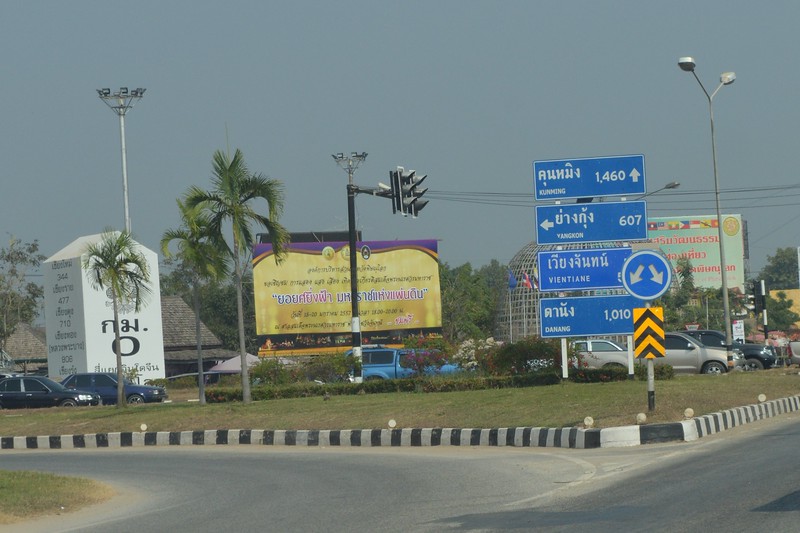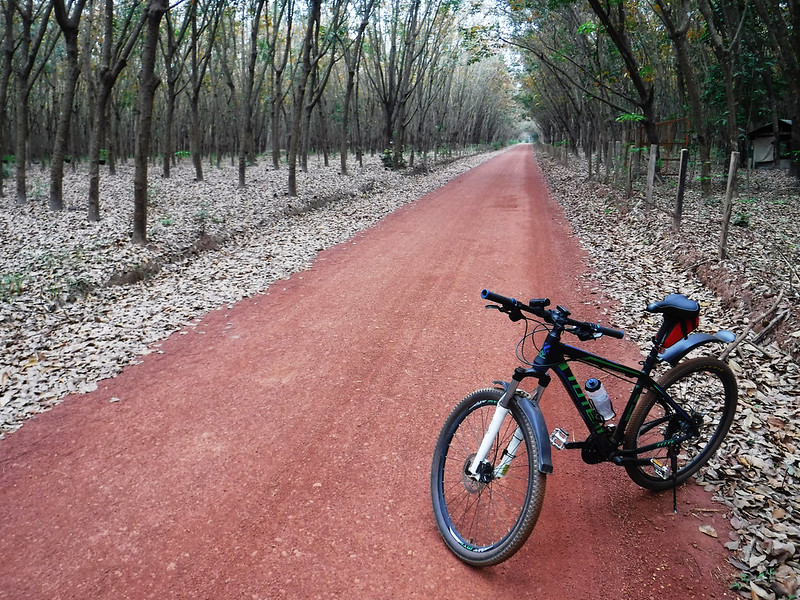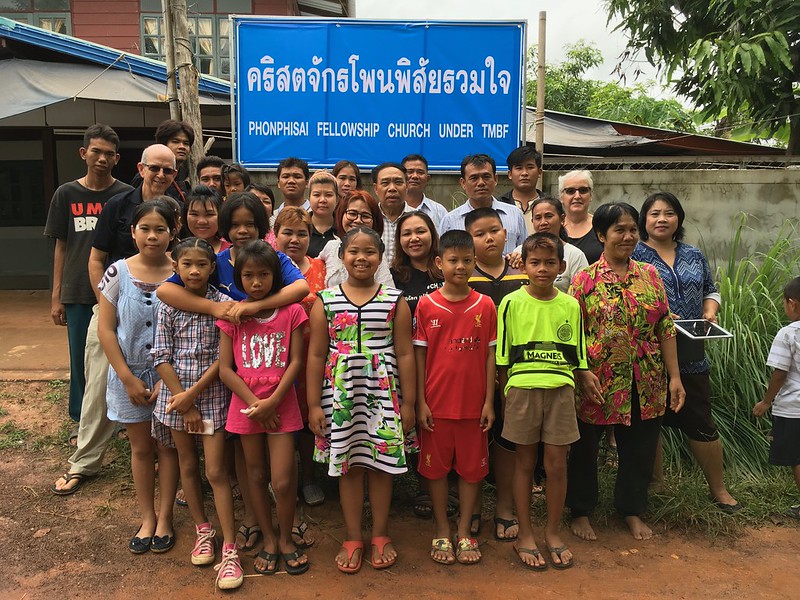January - Red Lotus Lake
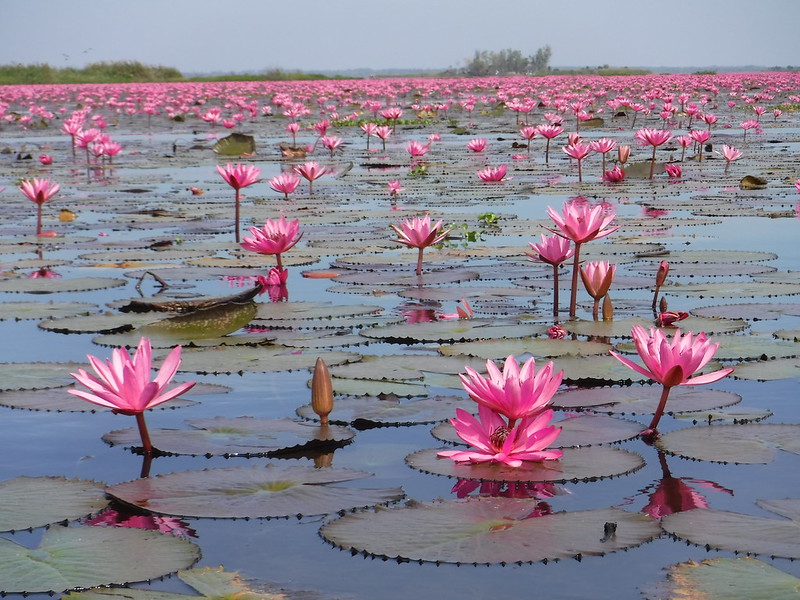
November through January is the best period to travel around Thailand. The air is cooler and the smoke from all the burning usually has not built up much yet. One of the travel bloggers in Thailand had posted pictures of a place in Isaan where there were lots of water lilies. We did some research and found that the place is called Red Lotus Lake and is about a 2-1/2 hour drive from our house in the next province to the south. We didn't know much about the lake or what to expect, we just took off to investigate.
We arrived at the lake about 11 am. We found out that it was almost too late in the day, as soon the water lilies would close up for the heat of the afternoon. Nonetheless, we hired a boat and joined the myriad of people who were out on the lake, It was really amazing to see all of the pink water lilies. We ended up going back about a month later when we had some people visiting us.
If you're ever in Thailand between Mid-December through February, this place is worth a visit. Perhaps a nice Valentine's date.
February - Baptisms
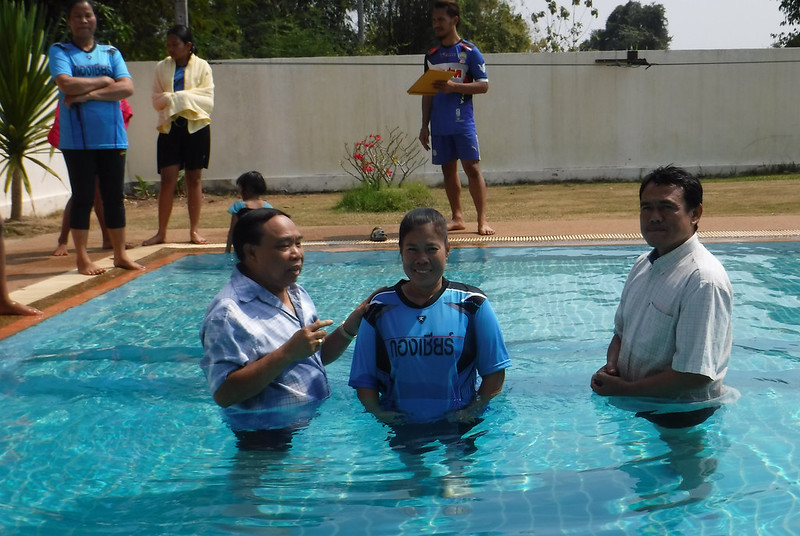
For those in the business of church planting, one of the greatest activities one can have is baptisms. We've had several baptismal ceremonies since coming here, but this one was a bit special because of the testimony of one of the people getting baptized. Her story is one about how God is already doing a work and that we just join Him in what He is already doing. You can read more about that here.
March - Torch Ginger
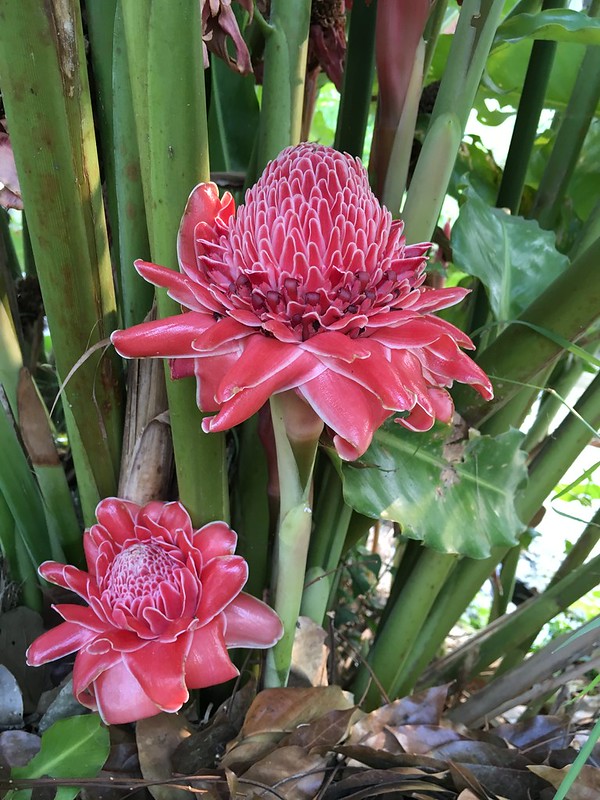
In March we had the opportunity to take one of our church members to some training in Chiang Mai. The training was called "Multiplying Disciples" and we enjoyed having our friend meet some of the many others in Thailand in a situation similar to his.
The training was at a place in the mountains with nice landscaping throughout. As is my usual practice, I like to get up early and go for walks and enjoy the wonders of God's creation. I found a little used path and was pleased to discover a small grove of torch gingers that had been planted. The blooms on these plants can be quite spectacular.
The ginger family is one of my favorites because of the diversity of styles of flowers. I just wish I had a place to plant them all!
April - Team Hope
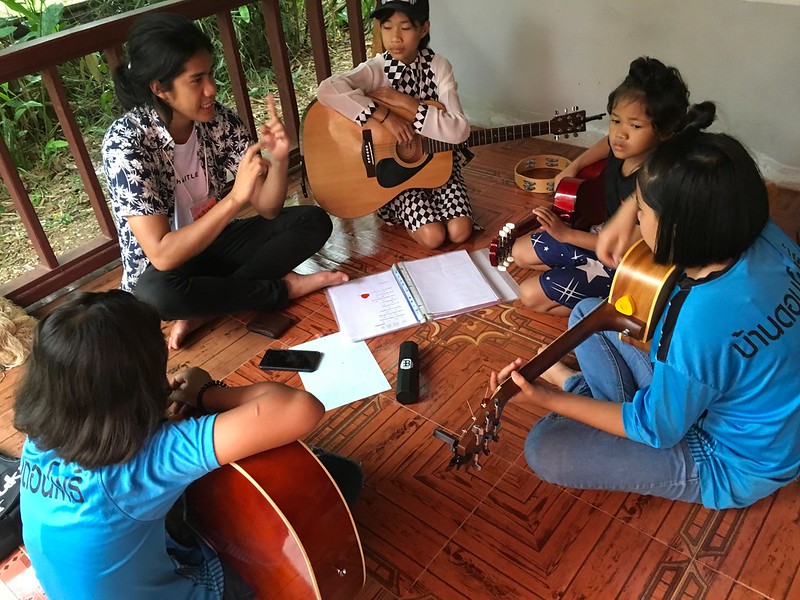
One of the parts of my job that I enjoy is being a catalyst. I don't necessarily have to do everything myself, but I can help facilitate bringing people together who can help each other. In April, we were pleased to bring a team from the Hope Center in Chachoengsao up to Phon Phisai to do some training. These are people we know well from having worked there in the past. This group of mostly young people came up to give training in various things.
One type of training they gave was guitar and music. Boat is a young man who studied music at university. While I sometimes have difficulty getting the young people in our church (mostly female) to come practice music, Boat, being young and single, had no problem getting them to come.
They even remembered some of the stuff he taught after he left!
May - Phu Phrabat Historical Park

It was our day off, and we were looking for a new place to explore. We made plans to go to a park a few hours drive to the south, but due to road construction, we lost a lot of time in the city of Udon Thani. So we changed plans and decided to head to Phu Phrabat Historical Park.
We had been to the park before, which is mostly known for its interesting rock formations. There are also lots of trails, and we decided to try some we had not been on before. There had been some early wet season rains, and things were a lot greener than during our previous visit during dry season. We hardly saw anyone on the trails that we followed.
Phu Phrabat Park, being an historical park, is not under the Forestry Department, but is under the Ministry of Arts and Culture. They have a bit of a different take on things. While most parks tend towards rustic, this one has the fanciest restroom I have seen in Thailand that even has piped in classical music!
June - Rice Planting
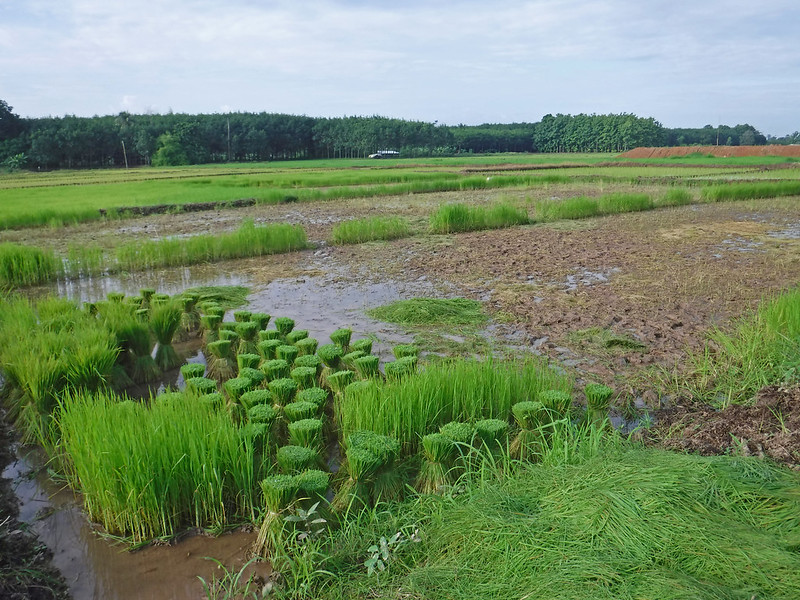
One day I decided to try a bike route I had not been on before. This trip took me to the next district north called Rattanawapi and a village called Nam Pe. It was the beginning of wet season, which means it was time to plant rice. Most people start their rice plants in nurseries and then transplant out. Here I passed and area where they were gathering up the seedlings to be brought to the paddies where they would transplant them. Young rice plants have a intensely bright green color, which doesn't always capture well in photographs.
July - Mango Baron

Sometimes we see things and, at first glance, aren't sure what to think. Is it a plant or an animal? If an animal, what kind is it?
Turns out that this particular creature is a caterpillar that favors mango trees. It is covered with lots of fine hairs which, if touched, can be quite painful. Or so I've read. I wasn't really wanting to test that theory because I've had run-ins with venomous caterpillars before and I am quite amazed at how much pain a tiny little hair can cause. While venomous, the mango baron caterpillar is at least pretty to look at.
August - Boat Race Practice
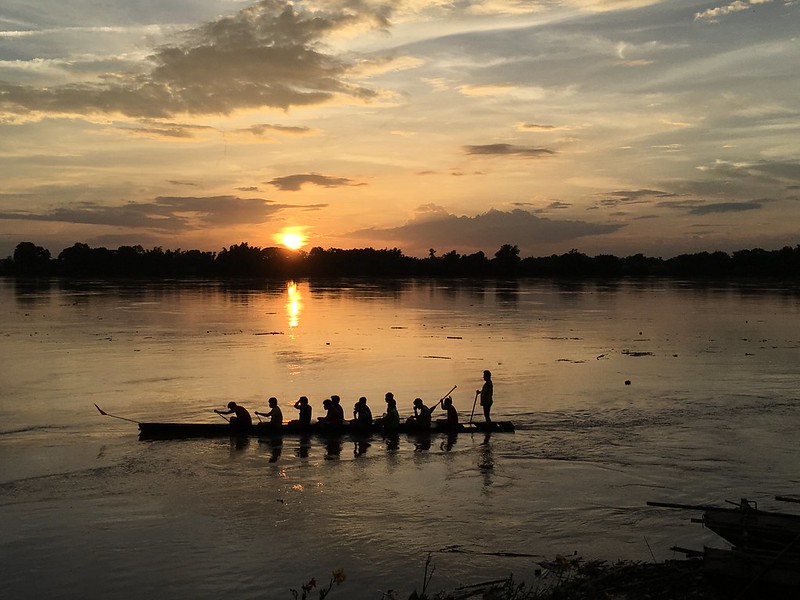
One thing we like to do when we have the opportunity is to go for an evening walk along the Mekong River. It is only one kilometer to the river from our house. During the rainy season, if there are breaks in the clouds, the sunsets can be quite spectacular.
On this particular day, we happened upon the boat racing team practicing. They have long-boat races every year in October during the Naga festival at the end of Buddhist lent. It's a lot of work to paddle these boats, but I'm even more impressed at the coach who balances himself on the very narrow tail of the boat. I may not be able to paddle a boat very well, but I can sooner do that than stand in the coaches place.
September (Thailand) - Phon Phisai Flooding

Wet season was extra wet this year. There is an area north of our house that does not drain very well when the Mekong River is running very high—and this year it was the highest it has been in at least 10 years. So we had a very big puddle—about 1 kilometer wide and two kilometers long. The puddle came up to the edge of the property we live on, and onto our road just a little bit. Other places did not fare so well.
I would bicycle through the puddles if they weren't too deep, but it's not so much fun if my foot goes under water with every turn of the crank. The house in this photo (to the right of the tree near the middle), actually had a boat tied to its stairway. At least the owners were smart enough to have a house on stilts.
September (Europe) - Brienzersee

I'm cheating and adding a second photo from September from our trip to Europe. I had the opportunity to attend a men's conference in Switzerland along with another of our missionaries from SE Asia. My wife and I went a week early to celebrate our 35th anniversary. Picking only one picture from that trip was quite a challenge.
We didn't know much about the area we were going to and we were looking for an affordable place to stay near Interlocken. We found a small village nearby named Ringgenberg whose better years were behind it. As for us, we enjoyed the nice quiet atmosphere of the town. We stayed at the Hotel Bären (Bear), whose host was quite friendly and helpful. There was even a small grocery/bakery across the street from our hotel where we could get nice breads, cheese and chocolate (the essentials of life).
Ringgenberg is on the northwest shore of Lake Brienz (Brienzersee). One evening we walked up to an old castle turned Protestant Church overlooking the lake. We had the place to ourselves. It was so quiet and clean. The blue-green color of the lake was amazing.
We had initially only booked two nights in Ringgenberg, because we did not know what it would be like. We ended up staying four nights.
October - Sam Roi Yod
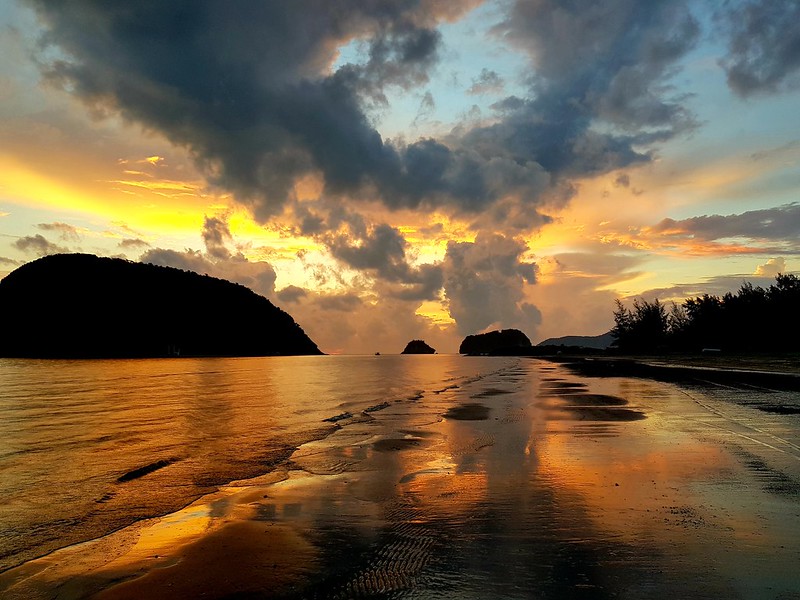
Each year, all of us MB missionaries from Thailand gather for a time of resting, connecting and encouraging one another. The place we meet varies from year to year. This year, the organizers decided to go to Sam Roi Yod, which happens to be one of our favorite places in Thailand. We were quite happy with that.
My usual habit when in Sam Roi Yod it to go for a morning walk and watch the sunrise from the beach. On this particular day, the tide was out and the wind was still so there was actually nice reflections from the shallow water on the shore. And the clouds were amazing as well. Probably the most awesome sunrise I have seen from the beach. Sam Roi Yod certainly did not disappoint.
November - Phu Tawk
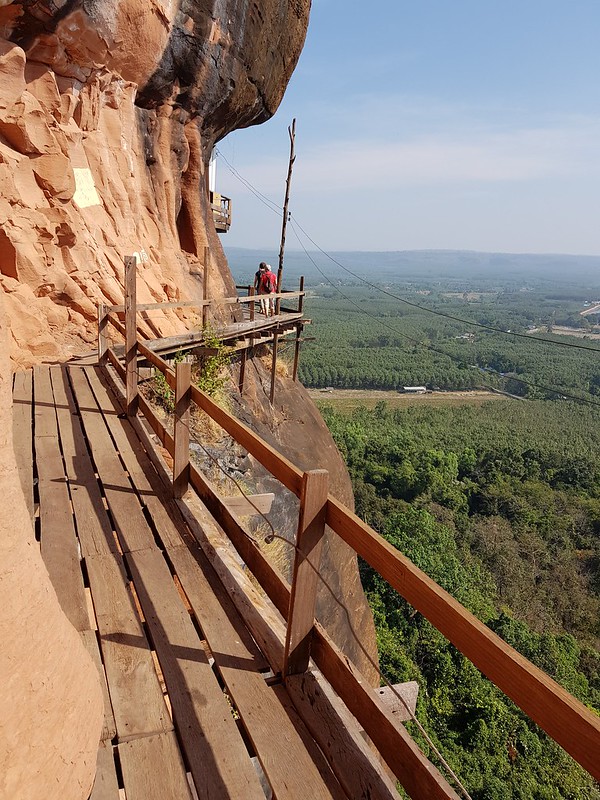
In November we had a visit from a second cousin whom we'd not met before. Patricia stayed with us for a few weeks. One day we took her to visit Phu Tawk, an interesting mountain in nearby Bueng Kan province. It was our second time there—our first being during rainy season when the skies were cloudy and the humidity oppressive. This time was quite different.
Phu Tawk is considered a sacred site and the monks have constructed seven levels of walkways on the mountain, a couple of which are tacked onto the side of the cliff. This is not a great place to visit if you are afraid of heights. Or if you don't like stairs. There is an unbelievable amount of stairs to get to the top.
But for us it is worth the climb and the occasional dizziness from the drop-offs. The views are awesome.
December - Nong Khai Aquarium
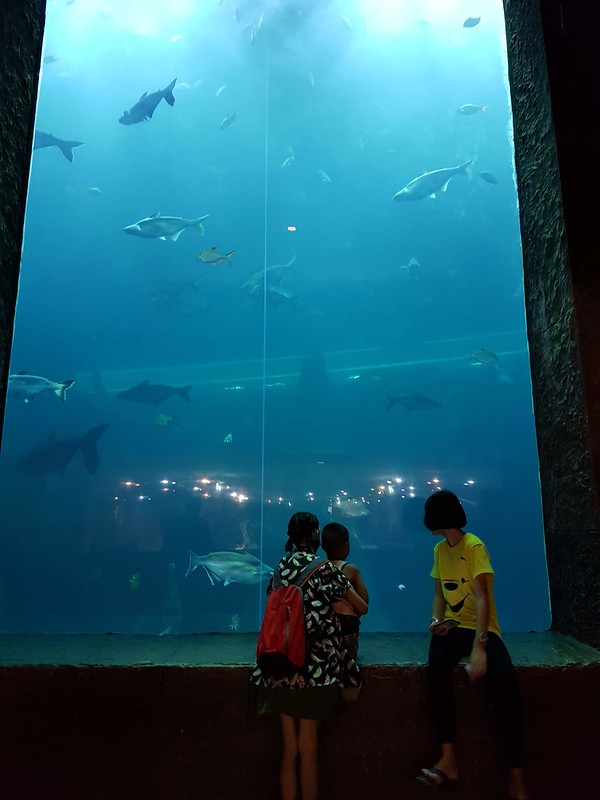
December 5th is the birthday of the previous king of Thailand and is regarded as Father's Day. Since the kids have off from school, we asked if anyone wanted to go to the aquarium in Nong Khai. Several were free and went with us.
The aquarium is on the Nong Khai campus of Khon Kaen University. There are basically two categories of fish here—endangered fish species (both salt and fresh water) and fish that are endemic to the Mekong River and adjoining waterways.
There is one big tank with a glass tunnel that you walk from top to bottom. In the big tank are several Mekong Catfish—the largest species of freshwater fish in the world. (The world's biggest freshwater fish was caught in the Mekong River near Chiang Khong about 15 years ago. It was about 9 feet long and weighed 646 pounds. Imagine the fish fry you could have with that!)
It was fun to see the delight in the eyes of the young people as they marveled at the awesome creatures that our God thought to create.

